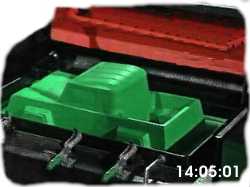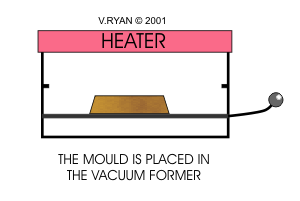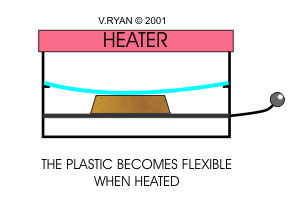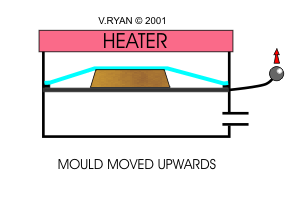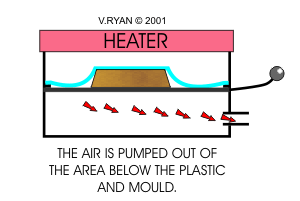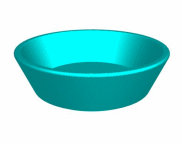|
VACUUM FORMING V. Ryan © 2001-2022 |
|
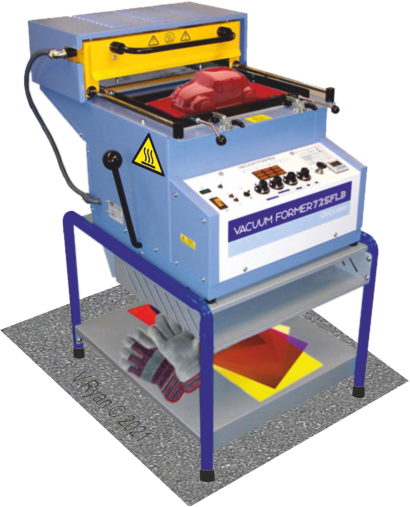 |
|
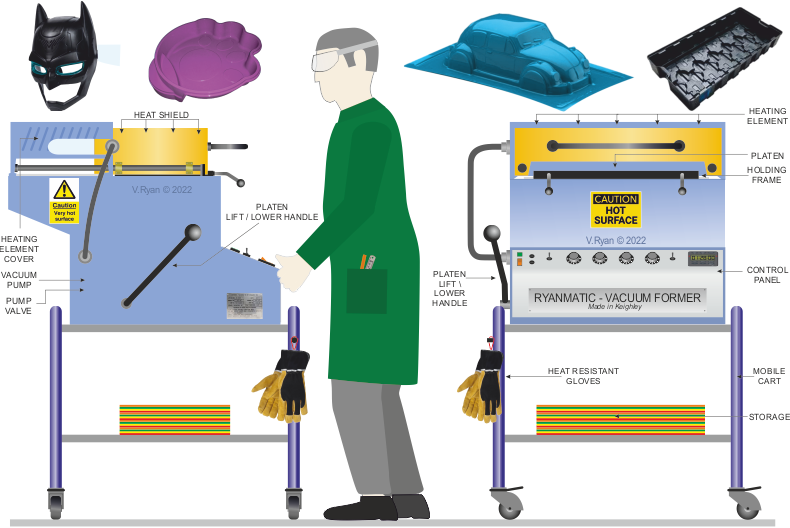 |
|
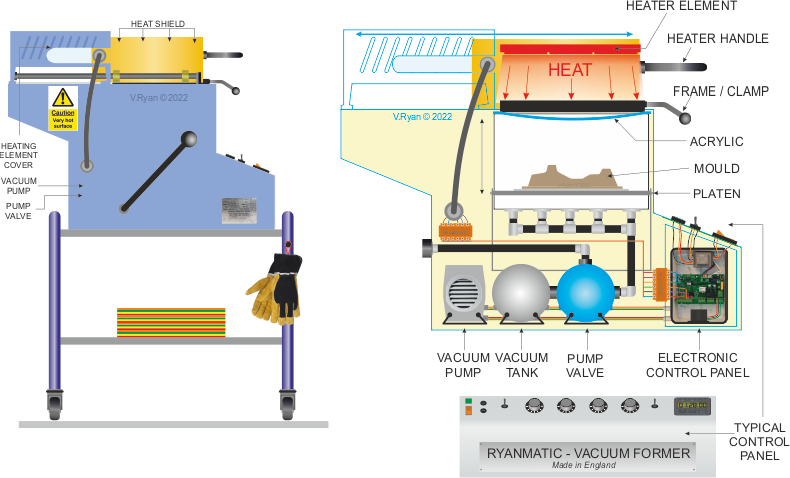 |
|
| Vacuum Forming - Box Learning Exercise (Independent Learning Exercise) | |
|
Vacuum forming is a technique that is used to shape a variety of plastics. In school it is used to form/shape thin plastic, usually plastics such as; polythene and perspex. Vacuum forming is used when an unusual shape like a ‘dish’ or a box-like shape is needed. Below you can see the stages involved in vacuum forming. |
|
|
To the right is an example of a vacuum formed toy. The simple 'lorry' mould has been placed in a vacuum former and a compressed polystyrene sheet has been placed above it. The polystyrene has been heated and then vacuum formed to the shape of the mould. |
|
|
Many everyday items have been vacuum formed in this way. Look around your home - list some examples. as a guide - some food products are packaged in vacuum formed materials. |
|
|
IMPORTANT - CLICK HERE FOR AN EXAMPLE OF VACUUM FORMING (ANIMATION) |
|
|
THE STAGES INVOLVED IN VACUUM FORMING |
|
|
|
|
|
Below are the stages involved in the vacuum forming of a small 'plastic' dish or bowl |
|
